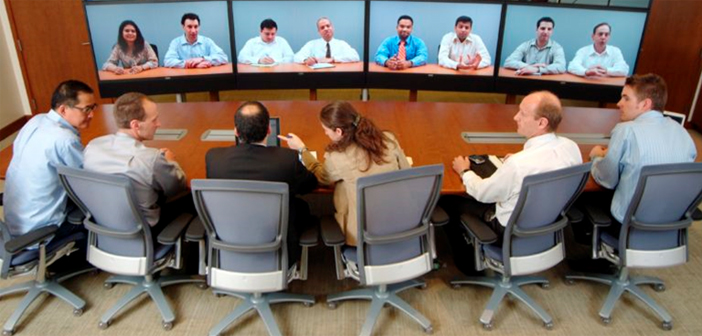How to successfully run a live On-Site Workshop when you have several people joining you online
What is Hybrid Presenting?
Hybrid training and presenting were never an issue before the Pandemic. During COVID, everyone was online continuously, so the problem didn’t rear its ugly head until people were allowed back out on site.
Now we have two challenges.
Hybrid, where the presenter is on-site, plus
Fusion, where she is online, and the audience are on-site.
An audience in a room on site gathered around a table with you appearing on a large TV screen at the front has its own challenges. We can deal with that another time.
You on-site with the audience both in the same room as you and online have many challenges.
Picture the scene. You’re in a room because the event organiser or host has asked you to be on-site. You probably prefer it as well. Seeing people, watching their reactions and encouraging interaction gives you energy and more intrinsic enjoyment than speaking to a camera lens with no feedback. I know dozens of trainers and presenters who prefer this route. I’m not judging this preference; I’m just helping you with some ideas to handle it.
Have a Second Facilitator
She would be devoted to the online audience and, ideally, be online with them. In a perfect world, the facilitator would be dedicated to the task. Still, this luxury is often challenged when budgets are discussed.
Instead, use one of the audience members and ask him to facilitate the online group. He might be a manager or someone who tends to encourage others and learn.
You on-site with the audience both in the same room as you and online have many challenges
This person would operate online software such as Zoom or Teams. They would set up the breakout rooms when exercises were announced. They would listen to the main presenter and react accordingly. They might liaise with the online group via chat and gauge the energy.
Questions from the online group may be fed to the main presenter, but only if she reads the chat stream. More on this later. I’ve had people in the on-site room operate the Zoom account, taking questions from the chat stream and asking them along with other audience members around the table.
The downside is that they can’t be participants as they cannot concentrate with the rest of the on-site group. You do need a dedicated resource here. The client might still be able to provide this person. They could also operate the camera selection on Zoom or Teams – more on this in a moment.
Camera Angles and Options
The presenter must appear online to the audience, but she mustn’t be distracted by this as her focus is on her on-site group. That’s how she achieves her momentum. However, she needs to regard the camera as an additional participant, giving the lens occasional eye contact in the same manner as everyone else in the room.
This primary camera should pick up her presentation and, ideally, any flipchart or screen work she uses. A webcam at the room’s rear may work, or at the front with a wide-angle lens. The camera needs to be in a fixed position; you don’t need a camera operator – that’s weird for small audiences and expensive too. Try positioning the camera at eye level with the presenter on a tripod or stand.
Don’t rely on a webcam for this task. You need a fixed, HD video camera hooked up to the laptop, not a standard webcam.
Ideally, you would want a second camera attached to the laptop that feeds the stream to the online audience. The dual camera would focus on the group in the room, capturing reactions and audio so people can hear their questions and discussions online. This is surprisingly important.
Zoom and Teams need someone to switch the cameras that are feeding in. Someone has to physically do this by pressing a button or menu selection on Zoom. The presenter mustn’t do this; she can’t be asked to stop her presentation and start fiddling with the laptop. Your on-site facilitator or assistant can do this.
Lighting
This is an area often neglected. Good lighting enhances the image on the camera enormously. Make sure the presenter is well lit, her flipchart or whiteboard and the audience.
Default lighting in meeting rooms or boardrooms is usually inadequate. Windows spoil online lighting but are welcomed in an on-site environment. This is where a compromise is needed.
Audio
A webcam or camera a fair distance from the presenter will not be good enough to pick up clear audio from her. It will be muffled and quiet. Poor audio will turn off the online audience very quickly.
Beg or borrow a wireless mic for the presenter and have this hooked up on her lapel or around her mouth, Madonna Style. Attach the receiver to the laptop. It’s not that tricky to do but requires a little preparation.
Desktop mics are available that pick up surrounding sounds. This might be an option, particularly boardroom-style mics in telephone conference setups. These work well and can pick up audience sound as well.
It’s almost impossible for the online audience to speak to the presenter and others unless you have a speaker system in the room to allow this. Your facilitator can make this happen; the presenter should not be expected to stop everything and take verbal questions from the online audience. Some can multi-task this process, but many can’t. Your host is being paid to present, not operate tech.
The Role of the Presenter
Is to speak, present and engage with her audience on-site and online. There are a few things she can do to enhance the experience, though:
Periodically talk to the camera more than the live audience
Address the camera as one person, not a group. Use language like “how are you doing” rather than “how are you all online”. You are addressing individuals at home or in remote locations. They’re not part of a group, so don’t address them as such.
Be wired to a mic so the online audience can hear clearly.
Not to forget that you have an online audience.
Possibly keep an eye on the chat stream if there is no second facilitator. I’ve achieved this on a few occasions by having two monitors hooked to the laptop or computer. The primary monitor has the audience’s heads on it. Some rooms have enormous screens that allow this easily. However, this chapter is not designed for those multi-million-pound setups – it’s designed for a training room with a small computer or laptop drafted in to help those who can’t be there in person.
A second monitor is jolly helpful to house the chat stream. Change the settings so the text is more prominent – say 20 points – that you can read from a distance. That way, you can occasionally stop to narrate what the online audience is asking. Awkward, but it can be done.
Encourage interaction from the online audience. Via chat with questions, maybe. Using the memes available, like raising hands or question marks. Stopping to take questions more formally during a training session. Your on-site audience will ask away as you flow. You can see people wanting to ask questions; it’s easy. However, it’s cumbersome on a screen unless you have a 100-inch monitor at the back of the room with HD images of people’s faces and bodies to read.
Pausing every now and then to take questions is a great idea. I use the phrase “learnings, questions, discoveries” to encourage input.
Summary
Here are some ideas to handle potentially troubling hybrid situations. Use the ideas; they all work – I’ve used them all. Resorting to type will produce a disjointed affair. Your online audience may lose attention and get on with the million other tasks facing them. Their excuse – I can watch the recording, but people never do.
Ask yourself, how many live webinar recordings have you ever watched? Truthfully.





